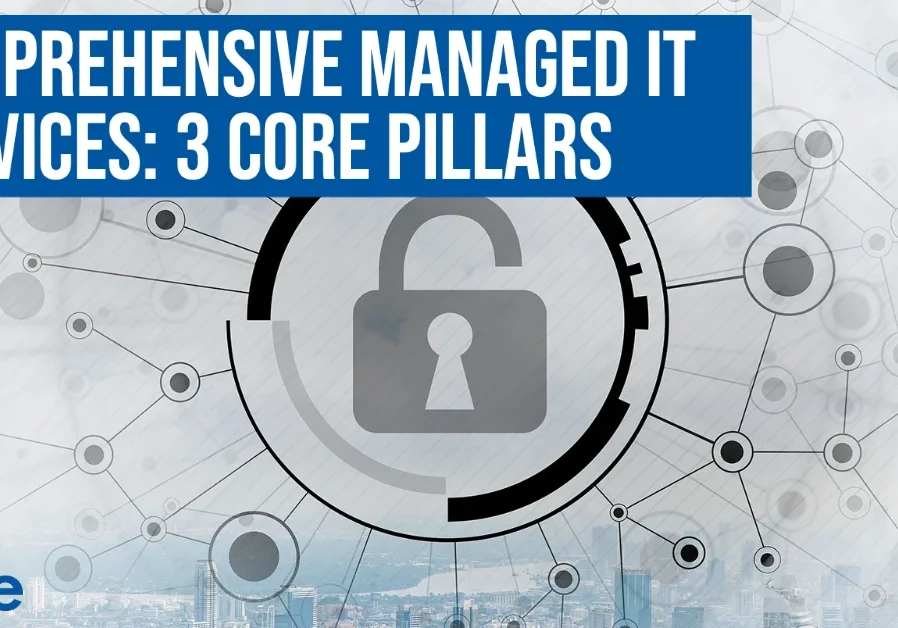Comprehensive Managed IT Services: 3 Core Pillars
September 14, 2022
After years of offering comprehensive managed IT services, our BriteStar team has outlined and documented our approach to help every organization safeguard its technology.
Technology enables us to live life and do business like never before. While we’re able to leverage it for good, if not properly managed it can be a nightmare. Between protecting your critical data and keeping business going, ensure your organization’s future through technology and a proactive IT strategy.
The 3 core services offered through BriteStar’s comprehensive managed IT services are organized into the following pillars:
Pillar 1: Proactive Management
Pillar 2: Essential Cybersecurity
Pillar 3: Disaster Recovery and Business Continuity
Pillar 1: Proactive Management
Technology mishaps can have longstanding consequences. From long downtimes to ongoing cybersecurity risks, being unprepared can be costly. With proactive management, teams can prepare, anticipate and mitigate future issues, including:
- Hardware failures
- Security risk
- Cost increase for unplanned equipment replacement
- Employee downtime
- Complacency
Luckily, every organization can minimize issues and impact with management processes in place. To help plan, we bundle proactive management into three categories: hardware, people and business.
Hardware: The first step is to protect the physical assets. That includes asset management, server and device health monitoring and patching. Keep assets well-maintained and be clued into potential problems by properly managing, monitoring and protecting the technology.
People: People always play a critical role in every IT and security framework as users of the technology. Proactively managing users involves creating onboarding and offboarding, implementing role-based permissions and educating on cybersecurity through user awareness training. By doing so, you’re inherently beginning to protect your critical business data through those using it.
Business: Tie the previous two sections together with a strategic managed service provider to collaborate and ensure the organization is on the right path by adhering to regulations and industry standards. Be confident that your organization is on track with technology with quarterly business reviews, compliance and policy documentation and technology road mapping.
Pillar 2: Essential Cybersecurity
After establishing a proactive plan for ongoing management. The next phase is to implement essential cybersecurity solutions to add a layer of protection against cyberattacks. With one-third of cyberattacks targeting small businesses, this is something that can’t be overlooked.
We see breach headlines in the news daily, but how does a breach happen? To summarize, here is an example of the six stages of a phishing attack. (See the whole explanation here.)
- Reconnaissance
- Delivery
- Exploitation
- Installation
- Command and control
- Actions and exfiltration
Defense in depth is the secret to a strong security approach. It’s challenging to know exactly what you need to do, especially with the increasing number of specialized security solutions on the market. We recommend addressing these five categories first:
- Proactive maintenance
- Security tools
- User education
- Monitoring and management
- Disaster recovery
Every organization is going to operate slightly differently and therefore will have a customized security strategy, but this outline helps focus on implementing the essentials.
Pillar 3: Disaster Recovery and Business Continuity
The reality is stuff happens – and you need a plan for when it does. Natural disasters, equipment failures, cyberattacks, etc. can create a lot of damage. Knowing where your data is and having backups is a lifesaver for both data recovery and business continuity for when those unfortunate events do occur.
A reoccurring theme of these pillars is to first grasp the scope of your own organization and this pillar is no different. To create a disaster recovery plan, you need to ask the following:
- What is my infrastructure? Data can be stored on-prem with servers, in cloud applications, or a hybrid of both. (If you don’t know where your data is, how can you protect it?)
- If you are using physical on-prem appliances, are you prepared if it fails? Natural disasters aside, and even with all the care in the world, technology does fail. An on-site failover is a solution for those instances. This means that the back-up appliance can run as the main while the failed server is being repaired.
- How often is data being backed up? A continuous snapshot method to capture data regularly and frequently minimizes the gaps in data loss.
A disaster recovery plan is truly lifesaving in those moments of panic. For example, a company was the victim of a ransomware attack and locked out of all systems and demanded they pay a ransom. Fortunately, they had disaster recovery in place and were able to simply restore from the last saved backup. The company did not lose any data, pay any money or experience any downtime, and were back up and running as if nothing happened.
It’s obvious that technology is engrained in our lives and businesses. At the end of the day, bases have to be covered by protecting the investment and the business data. Attackers don’t care who you are or what the business does. They will take advantage of any security gaps or exploitable data. Don’t go at it alone – Brite is here to help.
Hear our BriteStar team explore each pillar of our comprehensive managed it services more in-depth in this on-demand webinar from our March event, ‘Protecting Your Organization Through Technology’.

